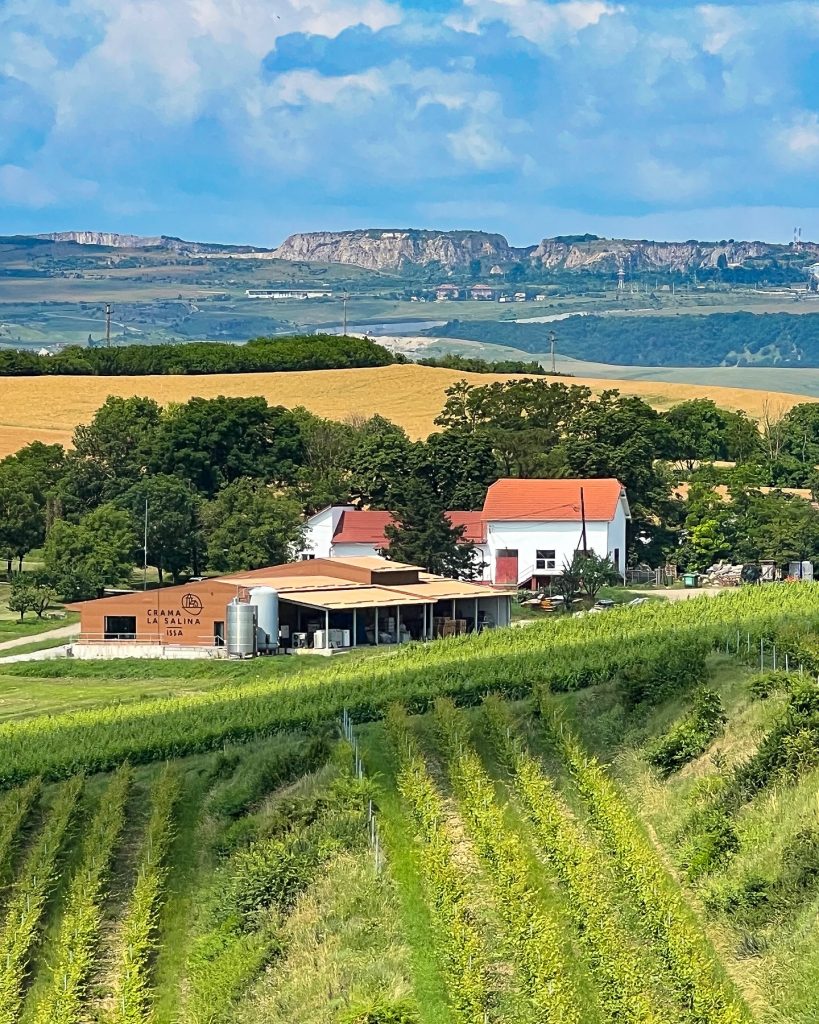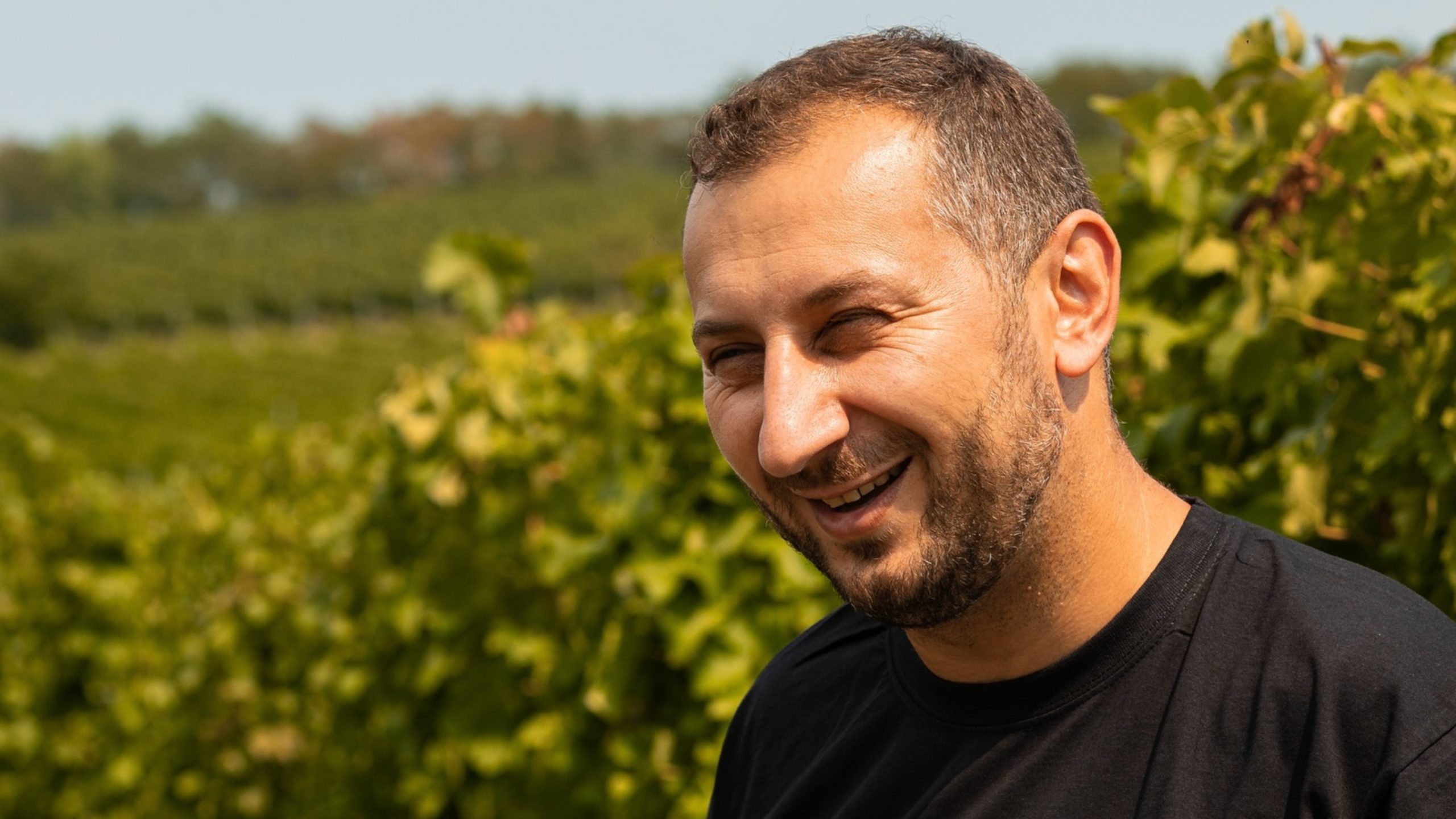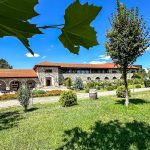We recently celebrated together the fact that La Salina’s Chardonnay Barrique received the title of Revelation of the Contest at Concours Mondial de Bruxelles. It is an major award, given the scale of the competition (7,500 samples in this section, one of the four annual sections), the professionalism of the jury, and the exposure that the medal-winning wines gain here. So, after things settled down, we asked Ovidiu Maxim, the enologist at La Salina and the creator of this memorable wine, to share a few words about himself, the wine, the winery, and the long road to this achievement.
The culmination of a long journey
Wines of Romania: First of all, now that things have calmed down a bit, do you remember how you felt when you received the news that your wine was the revelation of the contest? And how do you feel now, almost a month later?
Ovidiu Maxim: I still haven’t found the words to describe that incredible joy, especially since there were many mixed sensations. I would call it the culmination of the work so far, but it is much more than that. It is the joy of an important success, a recognition not only for me but also for Romania and its potential. I had the image of the years I worked almost alone here and all the difficult moments up to now, all culminating in this award.
It’s 15 years of hard work, sometimes more than 10-12 hours a day, which came at a huge cost, including in my personal life. I started everything from scratch here, from an old vineyard, cleared, replanted, to the construction of the winery, the restaurant, and all the subsequent development—all this happened before my eyes, and this award… I can only say it is an immense, indescribable joy. And I still get waves of joy when I remember, now and then, I still smile.
Wines of Romania: Can you say that anything has changed in your relationship with the shareholders?
Ovidiu Maxim: Yes and no. I could say they have more confidence in me, but what would that mean after 15 years of letting me manage the winery and the vineyard? They already had confidence. But I know they were happy; one of the shareholders even called me twice, once to congratulate me, the second time to tell me that he thinks the award is important for all of Romania. But I do feel a slight change in status. And, indeed, it’s about Romania, because today I am in the spotlight for a week, tomorrow someone else will be, Romania is winning more and more medals, and in this way, the world learns about us, we arouse the curiosity of wine lovers and tourists.

500-liter barrels, lightly toasted
Wines of Romania: What can you tell us about the wine?
Ovidiu Maxim: I knew from the first taste that it was special, primarily because it had an extraordinary balance, structure, and many subtleties beyond the dominant fruit. For some time, I’ve been aiming to highlight the fruit more and reduce the influence of the wood. So, in this case, I abandoned the classic 225-liter barriques and used 500-liter barrels of Romanian oak, toasted only medium and light, so the aromas would be as subtle as possible. The wine stayed in these large barrels for just three months, then aged in the cellar for another 7 to 9 months. I believe the samples sent to the competition had already been aged in the bottle for a year at the time of tasting.
Wines of Romania: Since you are essentially the person who revived viticulture and winemaking in Turda, tell us – was it significant that here, as archaeological evidence shows, is one of the oldest wineries in Romania, Cella Vinaria? Even though we are talking about the 2nd-3rd centuries and it is more than obvious that the tradition is older…
Ovidiu Maxim: The story begins with my meeting the current owners, who had initially hired me to take care of an organic apple orchard. While researching available European funds, which was how most medium-sized businesses started back then, I found it attractive to invest in vineyard conversion and winemaking. They allowed me to take over an old vineyard, which we cleared and started working on. I saw many vineyards during that time, and when I arrived in Turda, I had an indescribable feeling. A shiver, a thrill, an intuition, call it what you will. I simply felt the potential – the surrounding hills, the unique exposure, the soil… I didn’t know about Cella Vinaria back then, and I don’t know if it was by accident or divine will, but I think I felt the same thing that they must have felt back in the day…


Almost a physical education teacher!
Wines of Romania: Tell us a bit about the beginning of your journey in winemaking…
Ovidiu Maxim: Both my parents and grandparents made wine, albeit artisanally, for the family, so I can say I liked the idea from childhood. Right after high school, in 2001, I enrolled at the College of Viticulture and Winemaking in Blaj, and when I saw what was happening on the Tarnave Hills, I fell irreversibly in love with the field. Later, I continued my studies at USAMV Cluj Napoca; I already loved the vineyard and wine, but I think I fell even more in love in Cluj. Somehow, this profession chose me – in 12th grade, I was preparing to become a physical education teacher. But the teacher I was training with fell ill, I had to change my direction quickly, and I chose what I knew from the family, what was close to me – wine. And look, it turned out well after all, you may say.
La Salina Winery is among the first wineries in Romania to open with an integrated concept – not just vineyard and winery, but also a restaurant, space for events, equestrian center, fishing ponds, and accommodation facilities. The existing guesthouse (with 40 rooms) will be complemented this year by Issa Resort, bringing the total to 100 rooms.

La Salina Winery is among the first wineries in Romania to open with an integrated concept – not just vineyard and winery, but also a restaurant, space for events, equestrian center, fishing ponds, and accommodation facilities. The existing guesthouse (with 40 rooms) will be complemented this year by Issa Resort, bringing the total to 100 rooms.
La Salina Winery was established in 2011 in the heart of Transylvania, where the specific terroir of the Aries Valley imprints a distinctive identity. Therefore, these wines bear the name ISSA, a tribute to the millennial viticultural traditions formed here since the locality was called Potaissa.
Currently, La Salina Winery operates 42 hectares of productive vineyards with varieties including Sauvignon blanc, Chardonnay, Pinot noir, Muscat Ottonel, Rhine Riesling, Feteasca neagra, Cabernet Sauvignon, and 2 hectares of Neuburger.
📷 Photo Source: La Salina Winery







